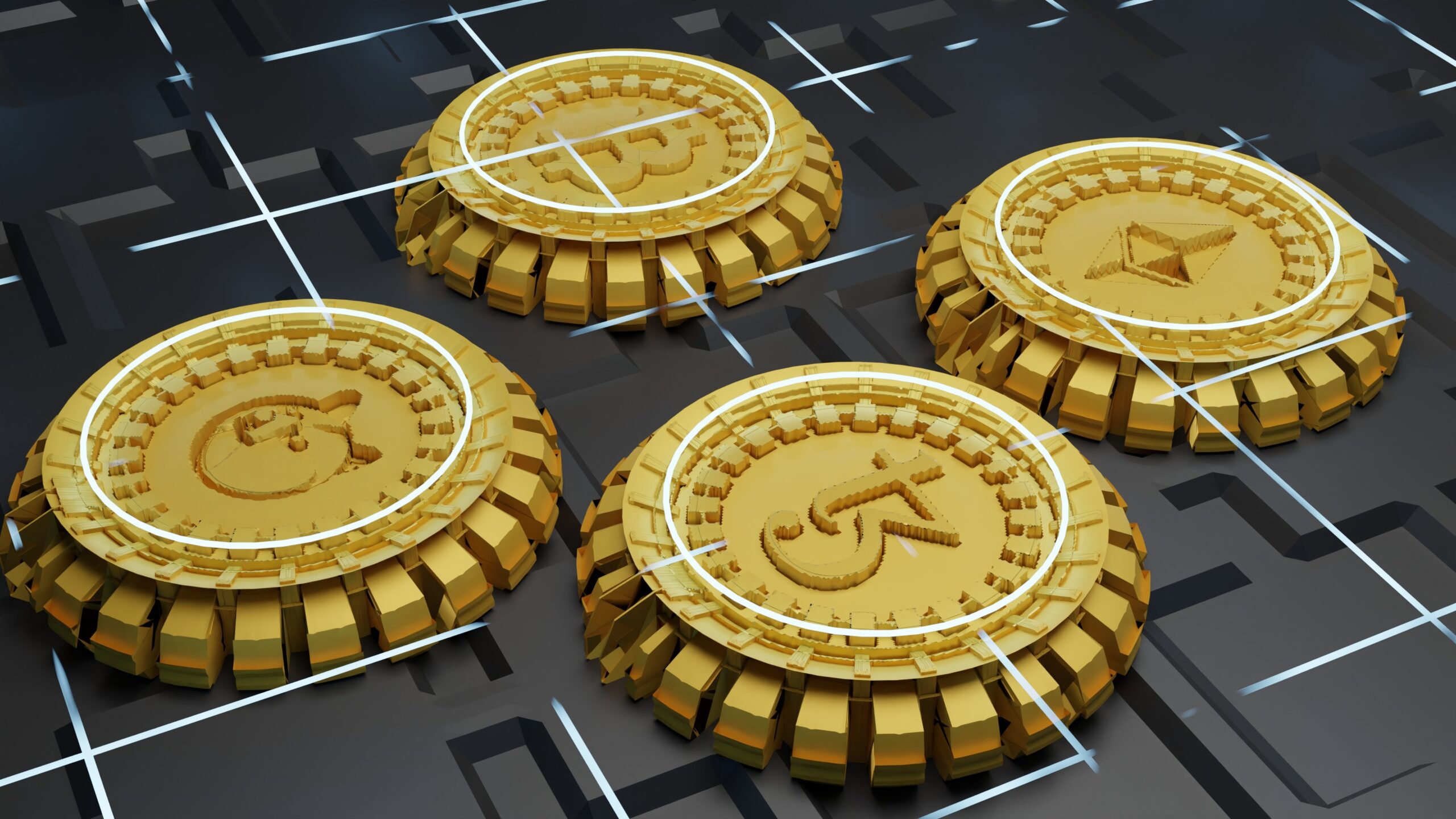Have you ever wondered about the role of tokens in the world of cryptocurrency? If so, you’re not alone. In this article, we will explore the concept of tokens and their significance in the cryptocurrency space. Whether you’re a newbie or a seasoned investor, understanding the fundamentals of tokens is essential for navigating the ever-evolving world of digital currencies. So, let’s dive in and unravel the mystery behind these fascinating elements of the crypto universe.

What is a Token?
Definition of a Token
In the context of cryptocurrency, a token represents a digital asset that is typically traded and recorded on a blockchain. It is a unit of value that can be created, transferred, and stored securely. Tokens are not limited to any specific format or function and can represent a wide range of assets, rights, or utilities within a blockchain ecosystem.
Types of Tokens
There are various types of tokens in the cryptocurrency space, each serving a different purpose. These include utility tokens, security tokens, stablecoins, decentralized finance (DeFi) tokens, non-fungible tokens (NFTs), and gaming tokens. Each type of token has its unique characteristics and use cases, catering to different needs within the ecosystem.
Characteristics of Tokens
Tokens possess certain characteristics that distinguish them from traditional currencies or assets. Firstly, tokens are based on blockchain technology, which provides a transparent and immutable record of transactions. Additionally, tokens can be divided into smaller units, enabling microtransactions and increased flexibility. Most tokens also have programmable capabilities through smart contracts, which allow for the automation of certain functions or the enforcement of specific conditions.
Token vs. Coin
Difference Between Token and Coin
While the terms “token” and “coin” are often used interchangeably, there is a fundamental difference between the two. Coins are native to their own blockchain networks and typically function as a digital form of money or currency, such as Bitcoin or Litecoin. On the other hand, tokens are built on top of existing blockchain platforms, like Ethereum, and rely on their underlying infrastructure for their operations.
Uses of Tokens and Coins
Both tokens and coins have various uses within the cryptocurrency space. Coins primarily serve as a medium of exchange, facilitating transactions and enabling peer-to-peer transfers of value. Tokens, on the other hand, may have broader applications. They can represent access rights to a specific service or platform, function as a reward system, enable voting or governance rights within a decentralized network, or even represent ownership of real-world assets.

Token Creation
Token Standards
Token standards define the technical specifications and functions for the creation and operation of tokens on a particular blockchain platform. The most widely known token standard is the ERC-20 standard for tokens on the Ethereum network. This standard establishes a set of rules for token creation, ownership, and transfer, ensuring compatibility and interactivity between different applications and services built on the Ethereum blockchain.
Initial Coin Offerings (ICOs)
Initial Coin Offerings, or ICOs, are a popular method for token creation and fundraising in the cryptocurrency space. In an ICO, a project or company releases tokens to the public in exchange for funding, typically in the form of established cryptocurrencies like Bitcoin or Ethereum. ICOs allow early investors to acquire tokens at a discounted rate, providing them with potential future value as the project develops.
Token Distribution
Once tokens are created, they need to be distributed to their intended recipients. This distribution process can vary depending on the specific token and its purpose. In some cases, tokens may be sent directly to investors or users, while in others, they may be earned through specific actions or participation within a network. Token distribution can also be facilitated through exchanges or decentralized platforms, where individuals can acquire tokens through trading or liquidity provision.
Blockchain Technology and Tokens
Tokenization of Assets
One of the significant benefits of tokens is their ability to represent real-world assets digitally. This process, known as tokenization, involves converting physical or tangible assets, such as real estate, artwork, or commodities, into digital tokens that can be traded on a blockchain. Tokenization allows for increased liquidity, fractional ownership, and the potential for broader accessibility and transparency in asset markets.
Smart Contracts and Tokens
Smart contracts play a crucial role in the functionality of tokens. These self-executing contracts are coded to automatically perform specific actions or enforce predefined conditions once certain criteria are met. In the context of tokens, smart contracts facilitate token transfers, manage ownership rights, and execute token-related functions, such as distributing rewards or enforcing governance rules. Smart contracts remove the need for intermediaries and provide a secure and transparent way to handle token operations.
Token Transfers on the Blockchain
Token transfers on the blockchain allow for efficient and secure transactions without the need for traditional intermediaries, like banks or payment processors. When tokens are transferred between parties, the transaction details are recorded on the blockchain, providing a transparent and immutable history of ownership and movement. These transfers can occur globally and at any time, enabling quick and borderless transactions, particularly in the case of digital assets represented by tokens.

Utility Tokens
Purpose of Utility Tokens
Utility tokens are a type of cryptocurrency token that provides access to specific products, services, or functionalities within a blockchain network or platform. These tokens serve as a form of “digital fuel,” allowing users to interact with the ecosystem, access certain features, or participate in activities like voting or staking. Utility tokens have inherent value within their respective networks, driving demand and utility for their holders.
Examples of Utility Tokens
Several well-known utility tokens exist in the cryptocurrency space. One example is the Binance Coin (BNB), which is used to pay for transaction fees and participate in token sales on the Binance exchange. Another example is the Basic Attention Token (BAT), which is utilized within the Brave browser to reward users for their attention and enable them to support content creators. These utility tokens showcase the diverse applications and benefits they can bring to a blockchain ecosystem.
Usage of Utility Tokens
Utility tokens are primarily used to access and utilize specific services or applications within their associated platforms. For instance, utility tokens might grant users access to premium features, enable discounts on fees, or reward active participation. Users can acquire these tokens through various means, including purchasing them on exchanges, earning them through activities or loyalty programs, or receiving them as incentives for contributing to the network’s growth.
Security Tokens
Definition of Security Tokens
Security tokens represent ownership rights or interests in an underlying asset, such as shares in a company, real estate, or investment funds. Unlike utility tokens, security tokens derive their value from the success or performance of the asset they represent. Security tokens are subject to stringent regulatory requirements and must comply with securities laws to ensure investor protection and mitigate risks associated with traditional financial instruments.
Benefits of Security Tokens
Security tokens offer several advantages over traditional securities. Firstly, they can provide increased liquidity through the use of blockchain technology, allowing for fractional ownership and the ability to trade assets 24/7. Additionally, security tokens can reduce the need for intermediaries in the issuance and transfer processes, potentially lowering costs and improving efficiency. Security tokens also enable global access to investment opportunities, opening up previously restricted markets to a broader range of investors.
Regulatory Compliance
Due to their classification as securities, security tokens must adhere to regulatory frameworks established by financial authorities. These regulations differ across jurisdictions, but they typically involve proper disclosure of information to investors, adherence to investor protection measures, and compliance with anti-money laundering (AML) and know-your-customer (KYC) regulations. Adhering to these regulatory requirements ensures accountability and transparency in tokenized securities markets.
Stablecoins
What are Stablecoins?
Stablecoins are a type of cryptocurrency designed to maintain a more stable value compared to other volatile cryptocurrencies like Bitcoin or Ethereum. They are typically backed by tangible assets, fiat currencies (such as the US dollar), or other cryptocurrencies. The goal of stablecoins is to provide stability and reduce price volatility, making them more suitable for everyday transactions and a hedge against market fluctuations.
Types of Stablecoins
There are three main types of stablecoins: fiat-collateralized, crypto-collateralized, and algorithmic stablecoins.
Fiat-collateralized stablecoins are backed by reserves of traditional fiat currencies held in banks. Each stablecoin is pegged to a specific fiat currency, maintaining a 1:1 ratio. Examples of fiat-collateralized stablecoins include Tether (USDT) and USD Coin (USDC).
Crypto-collateralized stablecoins are backed by a reserve of other cryptocurrencies. This type of stablecoin maintains stability by over-collateralizing the stablecoin with a basket of cryptocurrencies. Dai (DAI) is an example of a crypto-collateralized stablecoin, which is pegged to the US dollar.
Algorithmic stablecoins, also known as non-collateralized stablecoins, use sophisticated mathematical algorithms to regulate the supply of stablecoins and maintain price stability. These stablecoins do not rely on collateral assets but instead adjust their supply based on market demand and market conditions. Ampleforth (AMPL) is an example of an algorithmic stablecoin.
Advantages and Disadvantages
Stablecoins offer several advantages, such as providing a more stable store of value and facilitating everyday transactions. They can be used for remittances, as a stable unit of account, or as a hedge against crypto market volatility. Additionally, stablecoins enable faster and cheaper cross-border transactions compared to traditional banking systems, making them attractive for international payments.
However, stablecoins also come with certain risks and disadvantages. Depending on the type, some stablecoins may be susceptible to risks associated with the collateral assets or the algorithms used. Fiat-collateralized stablecoins face regulatory and counterparty risks, while crypto-collateralized stablecoins are exposed to the volatility of the underlying crypto assets. Algorithmic stablecoins, on the other hand, are subject to risks stemming from the reliability and accuracy of the algorithms used.
Decentralized Finance (DeFi) Tokens
Overview of DeFi Tokens
Decentralized Finance, or DeFi, tokens are a type of cryptocurrency that is specifically designed for use within decentralized financial applications and platforms. DeFi aims to transform traditional financial services by leveraging smart contracts and blockchain technology to create open, transparent, and permissionless financial systems. DeFi tokens play a vital role in facilitating various financial activities, such as lending, borrowing, trading, and yield farming, within these decentralized ecosystems.
Key Features of DeFi Tokens
DeFi tokens possess unique features that distinguish them from other types of tokens. Firstly, they enable users to participate in the governance and decision-making processes of the underlying platforms through voting mechanisms. DeFi tokens can also be staked as collateral to access borrowing and lending services, allowing users to earn interest or borrow additional funds. Additionally, DeFi tokens often provide liquidity incentives as rewards for users who contribute to liquidity pools or decentralized exchanges.
Popular DeFi Tokens
There are several well-known DeFi tokens that have gained popularity within the cryptocurrency community. For example, Aave (AAVE) is a DeFi token associated with the Aave lending platform that allows users to borrow and lend digital assets. Uniswap (UNI) is the native token of the Uniswap decentralized exchange and grants users various benefits, including voting rights and a share of protocol fees. Other notable DeFi tokens include Compound (COMP), Maker (MKR), and Yearn.finance (YFI).
Non-Fungible Tokens (NFTs)
Introduction to NFTs
Non-Fungible Tokens, or NFTs, are unique digital assets that represent ownership or proof of authenticity of a particular item or piece of content. Unlike cryptocurrencies or utility tokens, which are interchangeable and hold the same value, each NFT has distinct properties and cannot be replaced by another token. NFTs have gained significant attention due to their use in digital art, collectibles, virtual real estate, and other unique digital creations.
Unique Properties of NFTs
One of the key characteristics of NFTs is their indivisibility and uniqueness. Each NFT comes with specific metadata that verifies its authenticity, ownership history, and other relevant details. This uniqueness allows for the representation and transfer of digital scarcity and the creation of verifiable digital assets with distinct value.
Another important feature of NFTs is the ability to embed royalties or revenue-sharing mechanisms into the token itself. This allows creators to earn a percentage of future sales whenever the NFT is transferred or sold on secondary markets. This feature provides ongoing incentives for creators and can potentially disrupt traditional copyright and intellectual property models.
Use Cases of NFTs
NFTs have found applications in various domains. In the art world, digital artists can create and sell unique digital art pieces as NFTs, providing proof of ownership and authenticity in a digital format. NFTs have also revolutionized the concept of collectibles, where individuals can own unique digital assets like trading cards, virtual pets, or virtual real estate. Additionally, NFTs have potential uses in areas such as fan engagement, virtual identities, supply chain tracking, and more, opening up new opportunities across industries.
Gaming Tokens
Role of Tokens in Gaming
Tokens play a crucial role in the gaming industry, as they enable the creation of in-game economies and facilitate transactions within virtual worlds. Gaming tokens, often referred to as game coins or in-game currencies, can be earned, purchased, or rewarded within a game environment. These tokens serve as a medium of exchange for purchasing virtual goods, unlocking new levels or features, and enabling interactions between players.
In-Game Purchases
Tokens in gaming allow players to make in-game purchases, unlocking additional content or enhancing their gaming experience. These purchases can include items, skins, power-ups, or even access to exclusive areas within the game. In-game purchases are typically made using the game’s native token or directly through the use of cryptocurrencies.
Token Economy in Games
The use of tokens in games creates a token economy, where players can earn or trade tokens based on their in-game activities and achievements. This economy can incentivize players to spend more time in the game, complete specific tasks, or participate in community-driven events. Some games also allow for the exchange or trading of tokens between players, fostering a secondary market and enabling unique player-driven economies within the game.
In conclusion, tokens are an integral part of the cryptocurrency space, offering diverse functionalities and use cases. From utility tokens that provide access to specific services, to security tokens representing ownership rights, and stablecoins designed for price stability, tokens play a pivotal role in blockchain-based ecosystems. Additionally, NFTs and gaming tokens have emerged as transformative tools within the digital art and gaming industries, respectively. Understanding the different types and characteristics of tokens is essential for navigating the ever-expanding world of cryptocurrencies and blockchain technology.

